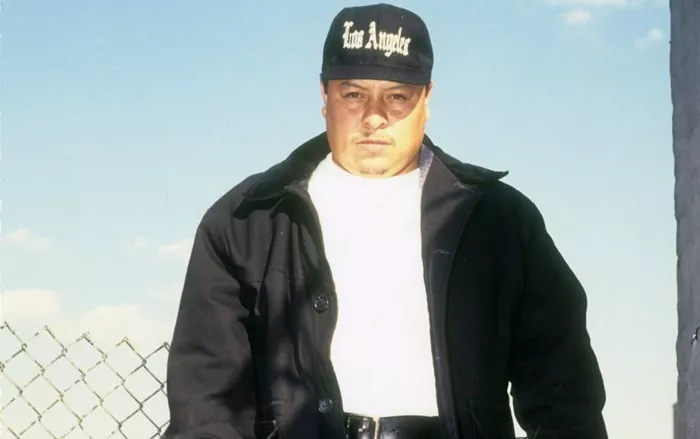Chicano rap stands as a vibrant and culturally significant genre within the larger landscape of hip-hop music. Emerging from the Chicano movement in the late 20th century, Chicano rap intertwines the experiences, struggles, and triumphs of Mexican-American communities with the rhythmic beats and lyrical prowess of hip-hop. In this comprehensive exploration, we delve into the origins, characteristics, key artists, themes, and impact of Chicano rap, unraveling its unique narrative and artistic contributions.
Origins and Historical Context
To understand Chicano rap, one must delve into its historical context. The term “Chicano” itself signifies pride in Mexican-American heritage and identity, often associated with political activism and cultural reclamation. Chicano rap emerged in the 1980s, parallel to the rise of West Coast hip-hop, particularly in cities like Los Angeles and Houston, where Mexican-American communities thrived.
The socio-political landscape of the time, marked by issues such as discrimination, economic disparities, and cultural marginalization, provided fertile ground for artistic expression among Chicanos. Hip-hop, with its roots in African-American communities’ struggles, became a powerful medium for Chicanos to voice their own narratives and experiences.
Characteristics of Chicano Rap
Chicano rap encompasses a range of stylistic elements that distinguish it within the hip-hop genre:
Bilingualism: One hallmark of Chicano rap is its fluidity between English and Spanish. Artists often blend both languages seamlessly within their lyrics, reflecting the bilingual and bicultural reality of many Mexican-Americans.
Regional Influences: Chicano rap’s sound is influenced by regional styles, incorporating elements of West Coast hip-hop, Southern rap, and traditional Mexican music. This fusion results in a diverse sonic palette, from hard-hitting beats to melodic tracks infused with accordion and guitar riffs.
Cultural Themes: Themes explored in Chicano rap range from identity struggles and social issues to pride in heritage and community resilience. Artists use their music as a platform to address topics like immigration, gang violence, cultural pride, and socio-economic challenges.
Community Connection: Chicano rap maintains a strong connection to its community roots. Artists often collaborate with local talent, feature references to specific neighborhoods or barrios, and engage in activism or community outreach initiatives.
Key Artists and Influences
Several pioneering artists have played pivotal roles in shaping Chicano rap and garnering mainstream recognition for the genre:
Kid Frost: Widely regarded as one of the founding fathers of Chicano rap, Kid Frost’s 1990 hit single “La Raza” brought Chicano pride to the forefront of hip-hop.
Cypress Hill: With their fusion of hip-hop and Latin influences, Cypress Hill achieved widespread success in the 1990s, becoming iconic figures in both rap and Chicano music scenes.
South Park Mexican (SPM): Hailing from Houston, SPM gained prominence for his storytelling prowess and unapologetic portrayal of street life, earning a dedicated fan base despite controversies.
Brownside: Known for their raw and gritty style, Brownside’s music often delves into the harsh realities of gang life and urban struggles faced by many Chicanos.
Ms. Krazie: Representing female voices in Chicano rap, Ms. Krazie’s introspective lyrics and emotional depth resonate with audiences, highlighting diverse perspectives within the genre.
Themes and Messages in Chicano Rap
Chicano rap serves as a platform for artists to convey a multitude of themes and messages, reflecting the complexity of Mexican-American experiences:
Identity and Cultural Pride: Many Chicano rap songs celebrate cultural heritage and assert pride in being Chicano, challenging stereotypes and reclaiming narratives.
Social Justice and Activism: Artists often address social injustices, advocating for change and raising awareness about issues such as police brutality, immigration reform, and systemic inequalities.
Struggles and Resilience: Lyrics often depict personal struggles, resilience in the face of adversity, and the impact of socio-economic challenges on communities.
Love and Relationships: Chicano rap also explores themes of love, relationships, and family dynamics, offering a nuanced portrayal of interpersonal experiences.
Street Life and Gang Culture: Reflecting realities in urban communities, some artists delve into the complexities of street life, gang culture, and the cycle of violence and redemption.
Impact and Evolution
Over the decades, Chicano rap has evolved and expanded its influence, resonating with audiences beyond Mexican-American communities. Its impact can be seen in several aspects:
Cultural Representation: Chicano rap has contributed significantly to the representation of Mexican-American culture within mainstream music, challenging stereotypes and fostering cultural understanding.
Cross-Cultural Fusion: The genre’s fusion of hip-hop with Latin rhythms and instrumentation has influenced broader trends in music, leading to collaborations and crossovers across diverse genres.
Community Empowerment: Chicano rap remains a powerful tool for community empowerment, providing a voice for marginalized communities and fostering a sense of solidarity and empowerment.
Global Reach: With the rise of digital platforms and global connectivity, Chicano rap has reached audiences worldwide, sparking interest in Chicano culture and fostering connections across borders.
Challenges and Future Directions
While Chicano rap has made significant strides, challenges persist, including issues of representation, commercialization, and cultural appropriation. Moving forward, key considerations for the genre’s future include:
Authenticity and Integrity: Maintaining authenticity and integrity in storytelling and representation is crucial to preserving Chicano rap’s cultural roots and relevance.
Diverse Voices and Perspectives: Embracing diverse voices and perspectives within Chicano rap ensures a rich tapestry of narratives and experiences, reflecting the complexity of Mexican-American identity.
Industry Recognition: Continued industry recognition and support for Chicano rap artists, including equitable opportunities for promotion and representation, are essential for sustained growth and impact.
Global Collaboration: Collaborations and exchanges with artists from diverse backgrounds can further enrich Chicano rap’s sound and broaden its global appeal, fostering cultural exchange and innovation.
Conclusion
In conclusion, Chicano rap stands as a dynamic and resilient genre within hip-hop, weaving together diverse influences, themes, and artistic expressions. From its origins in the Chicano movement to its global impact today, Chicano rap continues to celebrate cultural pride, challenge societal norms, and amplify marginalized voices. As the genre evolves, embracing authenticity, diversity, and community solidarity remains essential, ensuring a vibrant future for Chicano rap and its contributions to the ever-evolving tapestry of music and culture.

